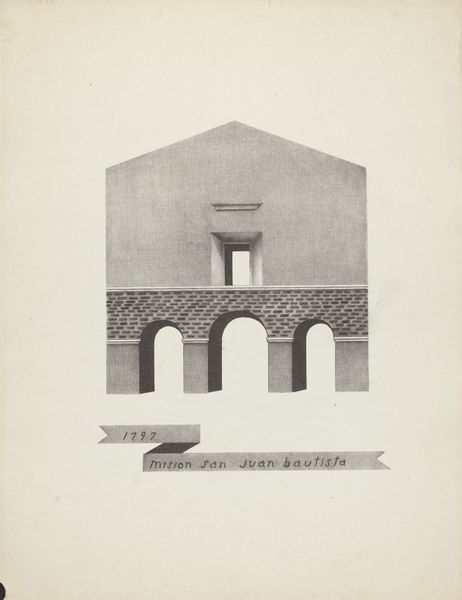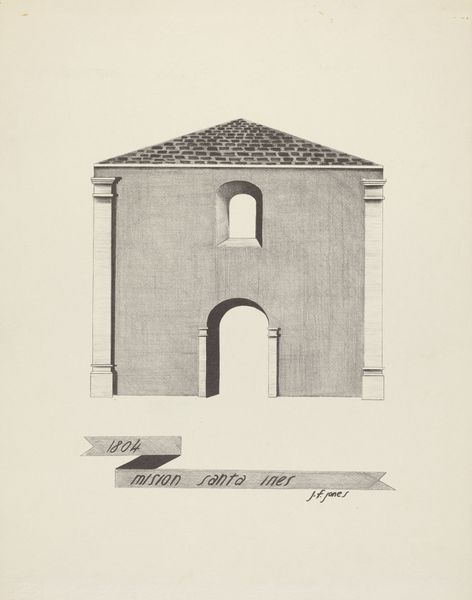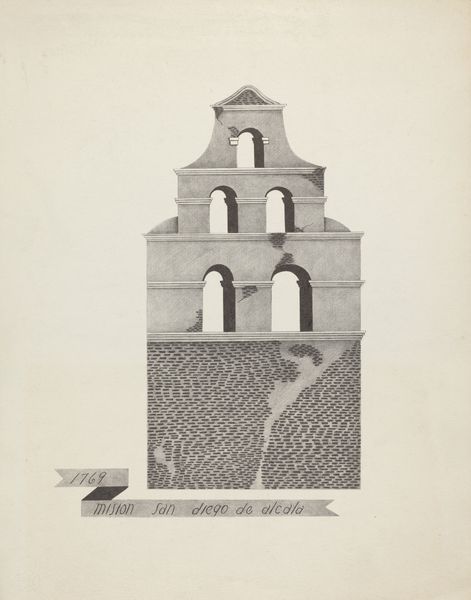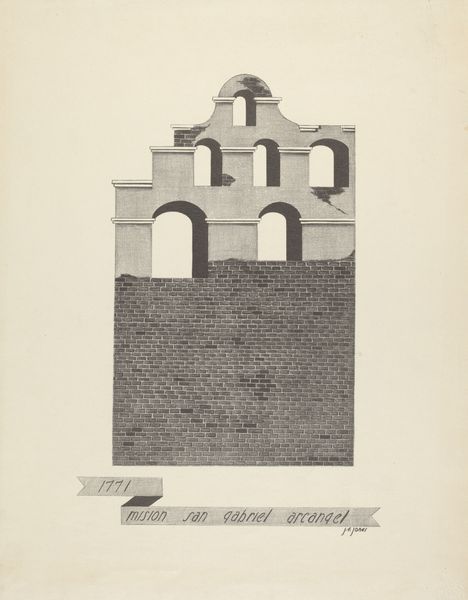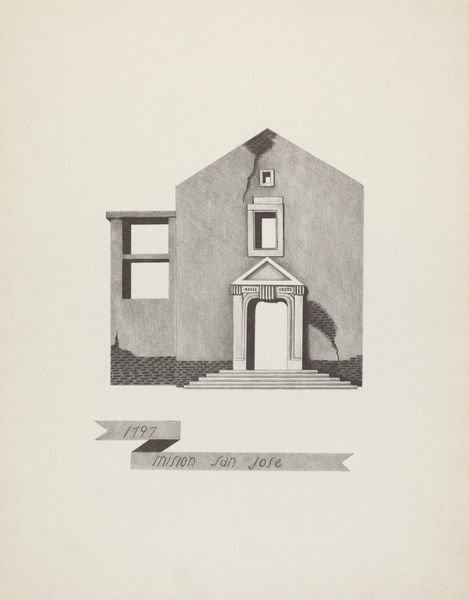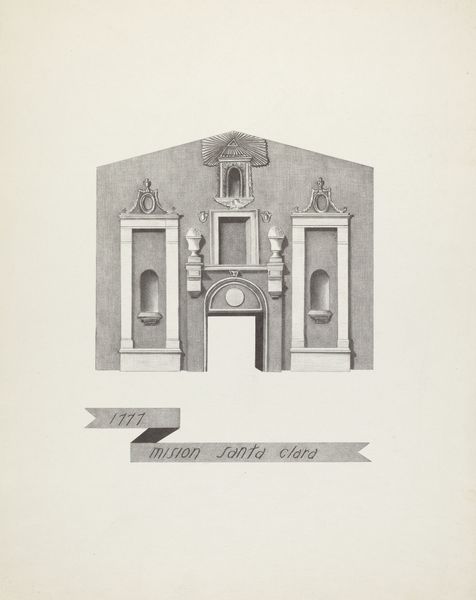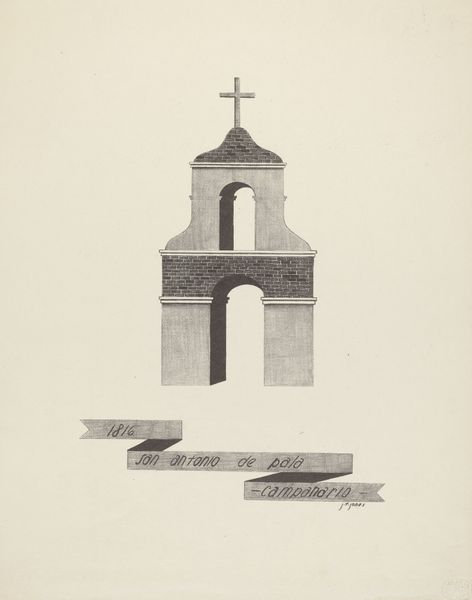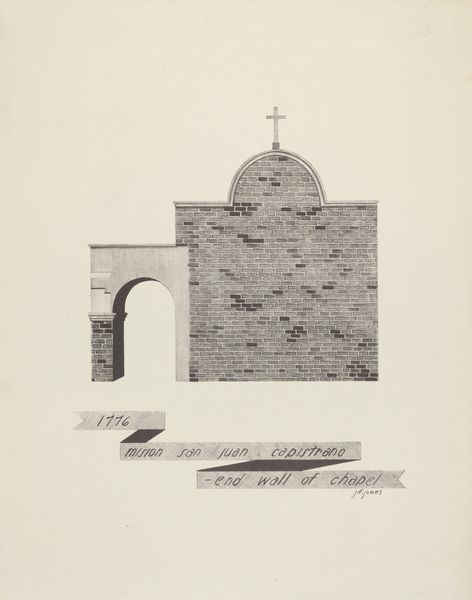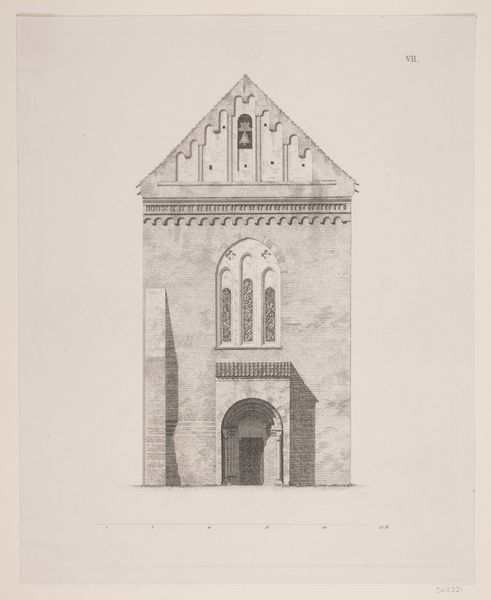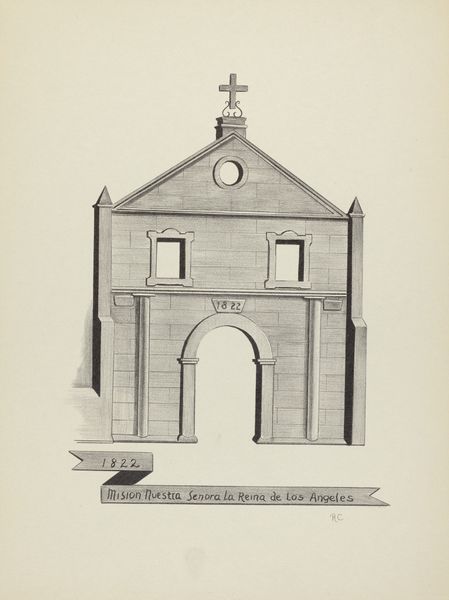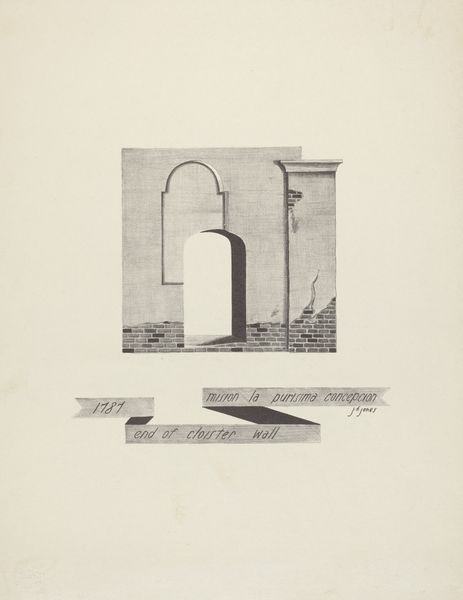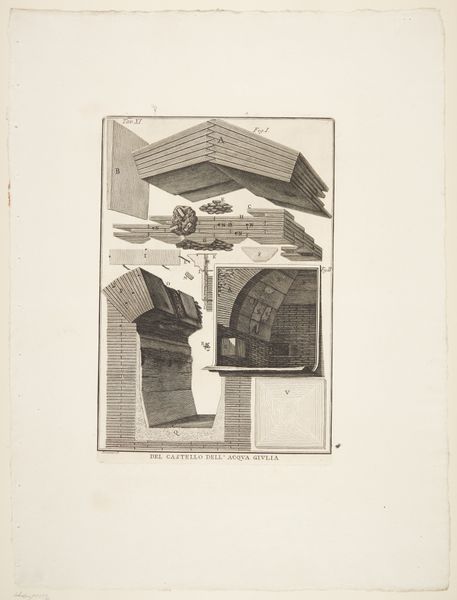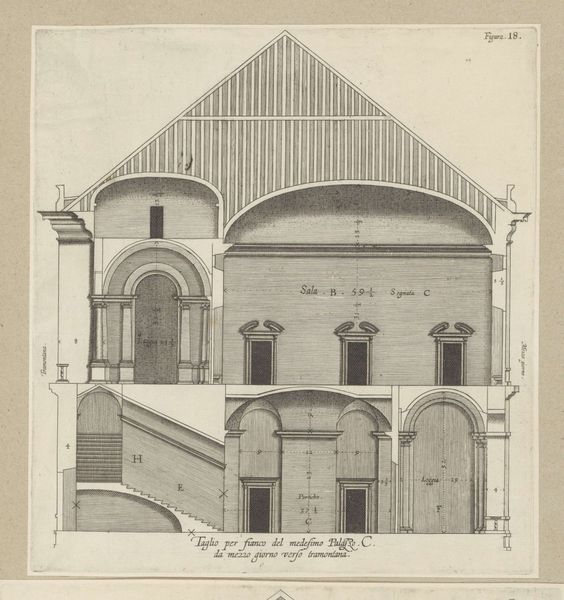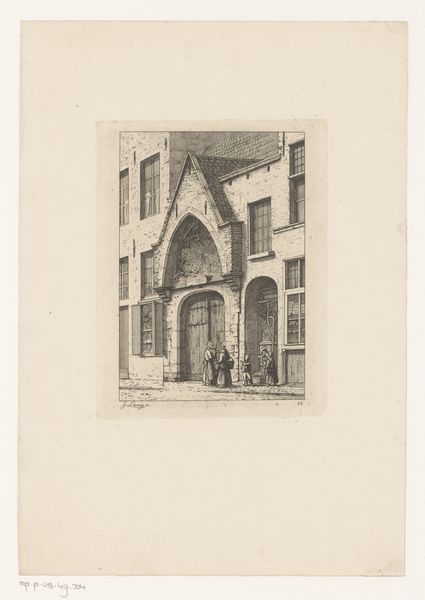
drawing, architecture
#
drawing
#
form
#
geometric
#
line
#
cityscape
#
academic-art
#
architecture
#
realism
Dimensions: sheet: 31.7 x 24.9 cm (12 1/2 x 9 13/16 in.)
Copyright: National Gallery of Art: CC0 1.0
Curator: This drawing, "Mision San Antonio de Padua," appears to be a study in architectural form. What do you notice first? Editor: Its austerity, almost skeletal. It feels so carefully rendered, emphasizing the labor-intensive craft of the actual construction of the mission. It gives me a feeling of enormous human effort. Curator: Exactly. The artist meticulously uses line and shading to delineate the facade, focusing on the geometric clarity of the arches, the roofline, and the textural contrast between the smooth surfaces and brickwork. Look at how the composition guides the eye. Editor: The implied labor really gets me. Imagine the workers shaping those bricks, hoisting them up…and I wonder, what were their lives like? Was it forced labor, a religious duty, or something else entirely? That unknown human cost looms large, despite its minimalist depiction. Curator: That tension is certainly palpable. What intrigues me, though, is the deliberate absence of context. We don’t see the landscape, only the idealized structure. This isolates the formal elements and prompts us to consider the architecture as pure form. Editor: While I appreciate that reading, it feels… sanitized. Reducing the mission to mere form ignores its material reality—the mud, the timber, the hands that shaped it. How can we separate form from its conditions of production? To me, the materiality speaks volumes about the power structures and social dynamics. Curator: An astute observation, indeed! The drawing then, becomes an artifact of representation. This is where form begins to be less a study of shape, and rather becomes a device within power dynamics to preserve or record the structure. It allows for it to be re-imagined through this interpretation. Editor: I agree. Perhaps in considering the drawing as an artifact of representation we're really acknowledging how the representation of the mission abstracts the place into idea, an ideology of domination in contrast with the exploited human materials from which it emerged. Curator: So, by studying form here, we expose that paradox, illuminating art’s dual function, where a visual composition of "beauty" obscures those essential sociohistorical truths. Editor: And thus reminds us to acknowledge these realities within the artmaking.
Comments
No comments
Be the first to comment and join the conversation on the ultimate creative platform.
